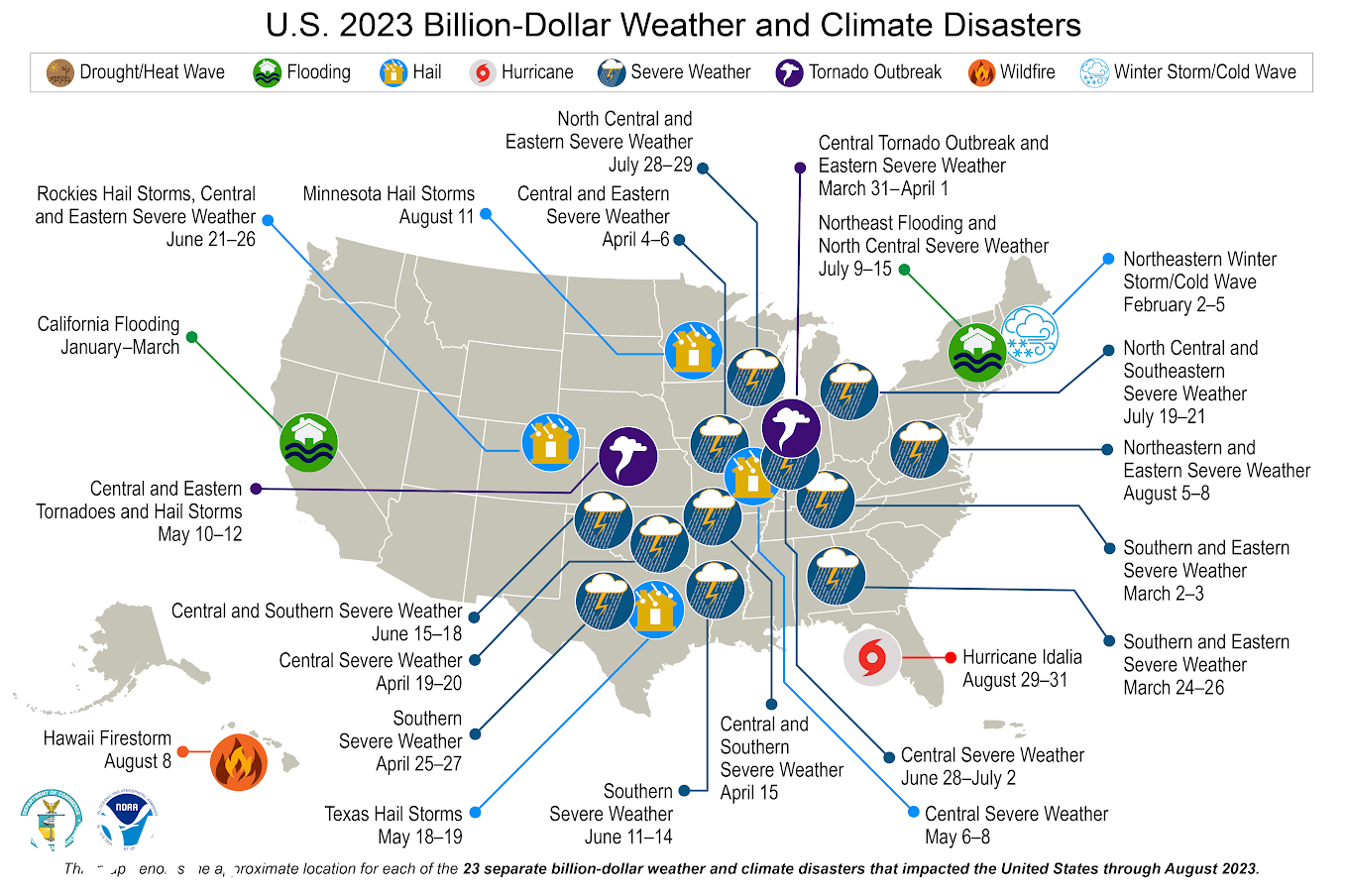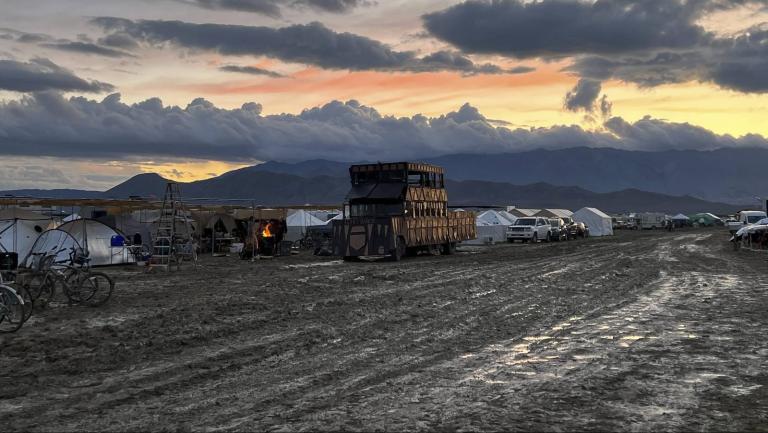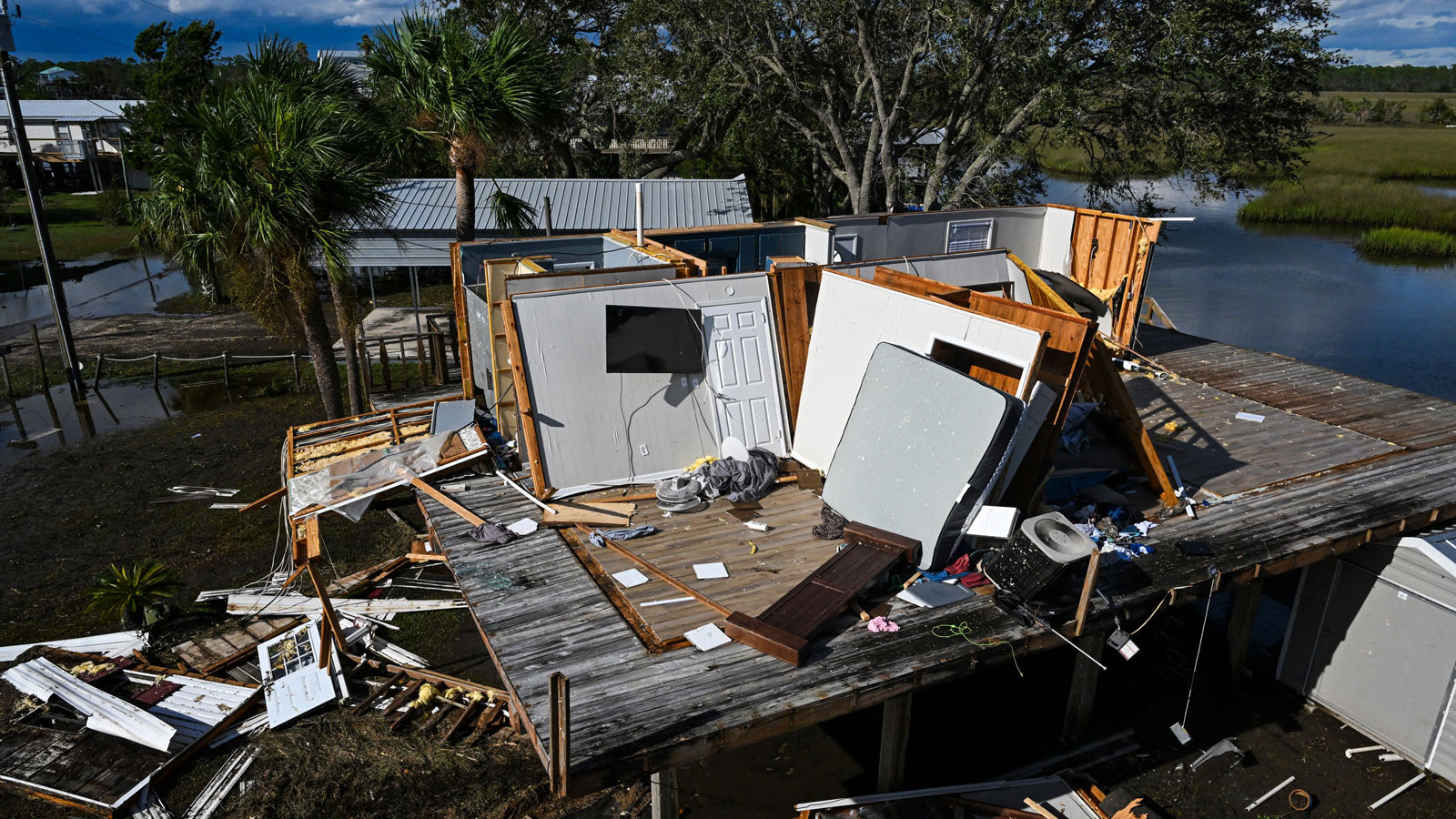Four months before the close of 2023, the United States has already broken its record for the number of weather and climate disasters with damages exceeding $1 billion in a calendar year.
There have been 23 “billion-dollar disasters” to date this year, according to a monthly report issued Monday by the National Oceanic and Atmospheric Association, or NOAA. The last calendar-year record was set in 2020, with 22 disasters costing $1 billion. (NOAA adjusts its count of past years’ billion-dollar disasters to account for inflation.) This year’s 23 disasters have cost Americans a total of nearly $58 billion and caused at least 253 deaths.
The events include Hurricane Idalia, the strongest hurricane to hit Florida’s Big Bend region in 125 years, and the Lahaina fire storm, the deadliest wildfire in the U.S. in more than a century. A winter storm in the Northeast, flooding in California and Vermont, and 18 severe storm events — including thunderstorms, tornado outbreaks, and hail storms — also contributed to the record.

With 12 weeks remaining in the Atlantic hurricane season and autumn wildfires common in the West, the U.S. is likely to end the year with an even higher number of billion-dollar disasters. According to the National Interagency Fire Center, much of the country faces above-normal risk of significant wildfires in September, though parts of southern California are expected to have below-normal potential.
In a statement released Monday, Rachel Cleetus, policy director and lead economist for the Climate and Energy Program at the Union of Concerned Scientists, called the NOAA report “sobering,” and “the latest confirmation of a worsening trend in costly disasters, many of which bear the undeniable fingerprints of climate change.”
Cleetus said the staggering financial losses underscored the need for more funding and attention toward climate resilience and adaptation. “It’s imperative that U.S. policymakers invest much more in getting out ahead of disasters before they strike rather than forcing communities to just pick up the pieces after the fact,” she said.
The 2021 Infrastructure Investment and Jobs Act included nearly $50 billion for climate resilience projects and the 2022 Inflation Reduction Act added several billion more, including $2.6 billion for coastal communities, $235 million for tribes, and $25 million for Native Hawaiians.
It will be years before the country sees the possible benefits of those investments. In the meantime, the federal government is struggling to keep up with the immediate impacts of natural disasters.
As part of a supplemental funding request that Congress is currently considering, the Biden administration requested $16 billion dollars in additional funding for the Federal Emergency Management Agency, or FEMA, to get the agency’s disaster relief fund through the fiscal year, which closes at the end of September.
As climate change contributes to more intense storms and larger and more frequent fires, the price of adaptation and recovery efforts will only grow.
“The science is clear that adapting to runaway climate change is an impossible feat,” said Cleetus, “so we must also sharply curtail the use of fossil fuels that are driving the climate crisis.”



